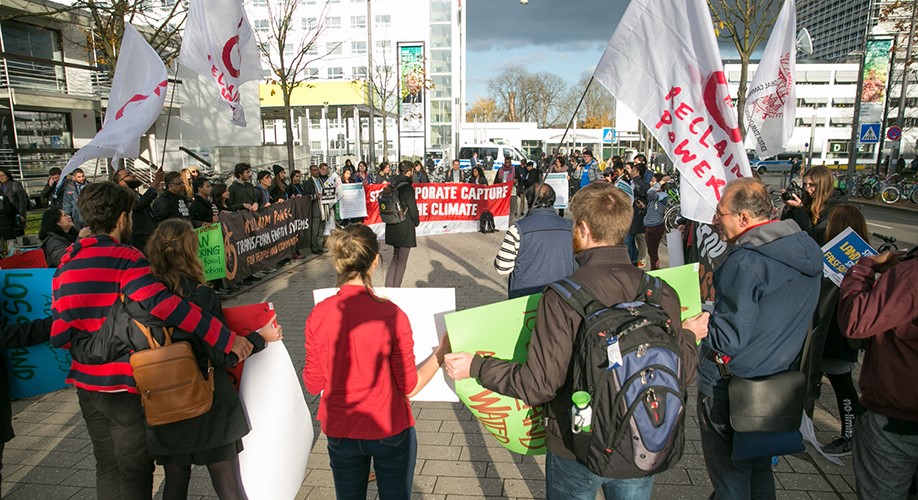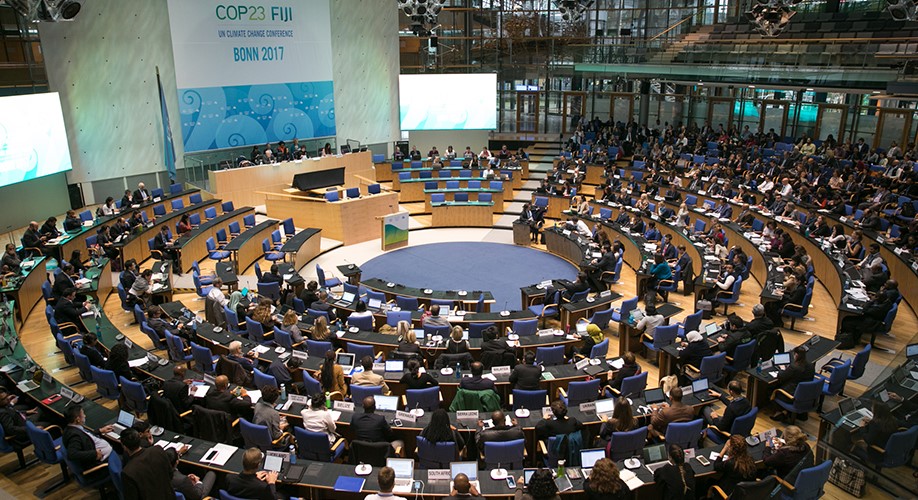The Bonn Climate Conference 2017: Progress on the implementation of the Paris Agreement and higher ambition?

Kati Kulovesi
Professor of International Law & Co-Director of the Centre for Climate, Energy and Environmental Law
THE LATEST round of United Nations climate negotiations concluded on 18 November 2017 in Bonn, Germany. What is the state of international climate policy after the meeting and what lies ahead for 2018 and beyond?
THE NEGOTIATIONS in Bonn were intended to have a mainly technical focus. Major outcomes were neither expected nor achieved. Still, the negotiating agenda was packed with issues ranging from agriculture and gender to indigenous peoples and loss and damage caused by climate change. Also high on the agenda were the main building blocks of the UN climate regime, namely mitigation, adaptation, finance, technology and capacity building.

ONE OF the main issues in Bonn related to the development of detailed rules for implementing the 2015 Paris Agreement. The deadline for concluding these important negotiations is in December 2018. While progress was achieved on some issues, long-standing controversies also surfaced and largely stalled negotiations on the crucial issue of mitigation.
THE PARIS Agreement’s key achievements include that its basic mitigation regime applies to all Parties; the Agreement does not refer to the outdated categories of developed and developing countries in the 1992 UN Framework Convention on Climate Change and gives more consideration to countries’ national circumstances. However, during negotiations on guidance on Nationally Determined Contributions (NDCs), China, India and their allies in the Like-minded Developing Countries group called for returning to a bifurcated system where different rules apply to developed and developing countries respectively. For many, such a system would constitute a major step backwards and the proposal met strong opposition especially from developed countries. Ultimately, countries forwarded 180 pages of text on mitigation to the next negotiating session in May. The text leaves all the highly divergent options on the table, including by reproducing word-by-word submissions from several countries and coalitions.
HOPEFULLY THE question of bifurcation will not distract the negotiators too much next year. For the question that urgently should take the centre stage in 2018 and beyond is that of ambition. The UN Environment’s 2017 Emissions Gap report indicates that the gap between the emission reductions needed to meet the Paris Agreement’s objectives, including the 2°C 1.5°C targets, and the existing NDCs is “alarmingly high” and “more ambitious NDCs will be necessary by 2020.”
THE PARIS Agreement relies on global stocktakes at five-year intervals from 2023 onwards to increase collective ambition. A similar exercise, a facilitative dialogue, was agreed in Paris for 2018. Now known as the Talanoa Dialogue -inspired by traditions of COP 23 President Fiji – this exercise will be an important opportunity to test the Paris Agreement’s largely procedural approach to mitigation.
THE TALANOA Dialogue will be informed by the Intergovernmental Panel on Climate Change’s Special Report on the 1.5°C target, scheduled for October 2018. Given that countries should submit new or updated NDCs in 2020, the hope is that the IPCC report along with the Talanoa Dialogue will lead to a stronger response to climate science and to more ambitious NDCs.
DIVIDED INTO preparatory and political phases, the Talanoa Dialogue will take place from January to December 2018. It will focus on three main questions: where are we; where do we want to go; and how do we get there. Positive elements in the Dialogue’s design include its comprehensive and participatory nature. Parties, stakeholders and expert institutions are invited to provide analytical and policy-relevant input. They are also invited to organize local, national, regional and global events in support of the Dialogue.
A PROBLEMATIC feature of the Talanoa Dialogue’s design is that there is no clear path forward from the Dialogue towards more ambitious NDCs. The Dialogue’s outputs will include summaries and reports of the discussions. The outcome is also “expected to capture the political momentum, and help Parties to inform the preparation of nationally determined contributions.” However, there seems to be nothing in the design to ensure that ambition will indeed be increased following the Dialogue.

HOW, THEN, to start building the momentum for more ambitious climate action? An obvious challenge for the political climate is that President Trump has announced intentions to withdraw from the Paris Agreement in 2020 and the US federal government is no longer providing global climate leadership like it did during the negotiations for the Paris Agreement, especially through bilateral cooperation with China.
SEVERAL PROCEDURAL steps have already been identified both within inside and outside the UN climate negotiations for the next couple of years. These include:
- One Planet Summit by French President Macron in Paris on 12 December 2017
- UN climate change negotiations in Bonn from 30 April to 10 May 2018
- Global Climate Action Summit in California 12-14 September 2018
- COP 24 in Katowice, Poland, on 3-14 December 2018
- UN climate summit by UN Secretary-General Guterrez in 2019
WHILE IMPORTANT, these steps are not by themselves enough to guarantee that ambition will be increased in 2020. Stakeholders within EU countries and elsewhere should therefore take advantage of the participatory nature of the Talanoa Dialogue and build pressure on politicians to take stronger action both nationally and internationally. An encouraging example of going beyond the official government position is the ‘alternative’ US represented through individual states, cities and other stakeholders. The ‘alternative’ US was highly visible in Bonn and plans to remain active in global climate policy despite the backward position on climate change by the Trump Administration.
THE PARIS Agreement’s legal structure is interesting and innovative in that it includes opportunities to bring various actors at various levels of global governance closer together, including when preparing NDCs and evaluating collective progress through global stocktakes. The Talanoa Dialogue will provide the first important opportunity to test this design and hopefully show that it can actually work in increasing collective mitigation ambition.